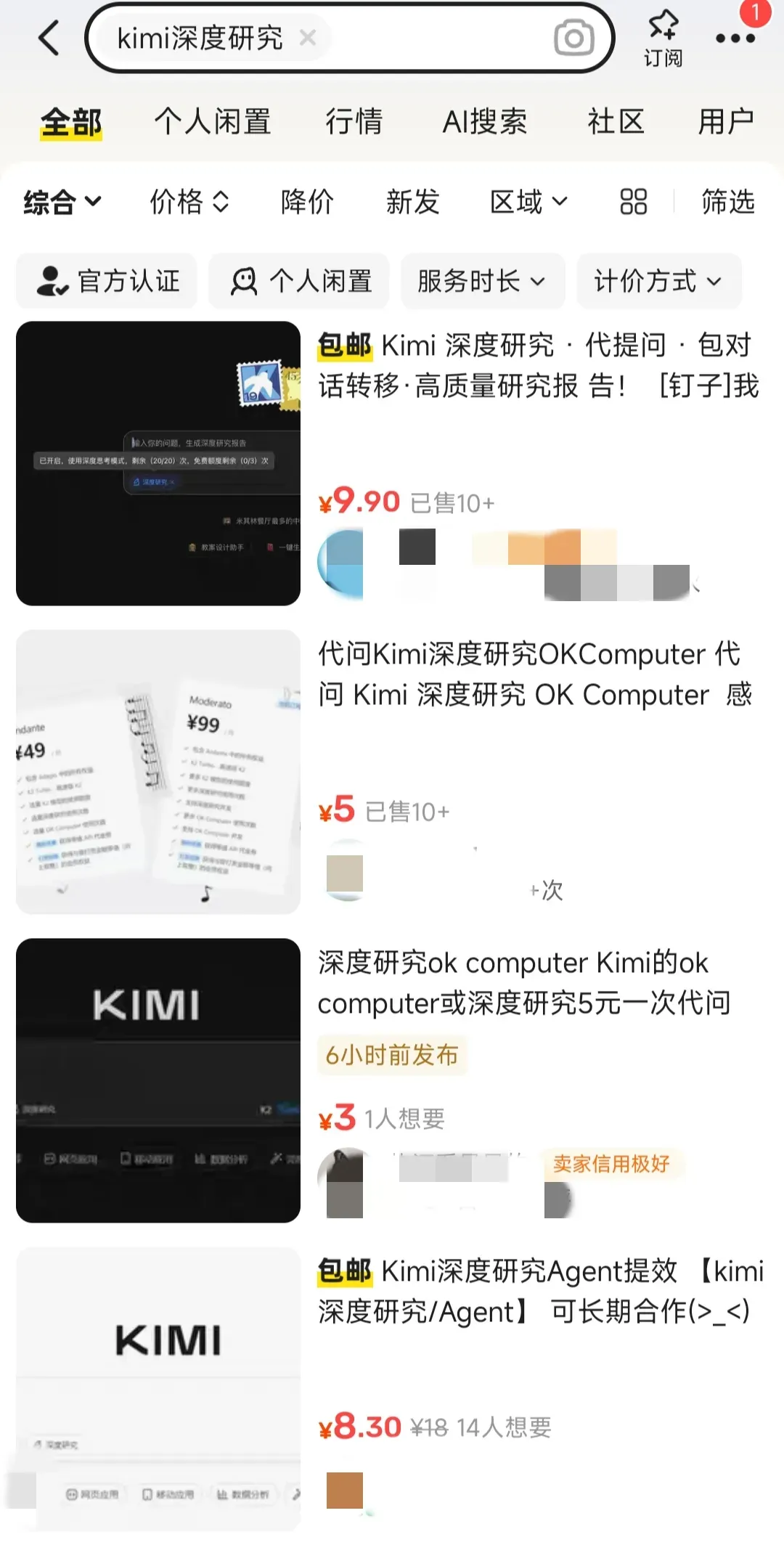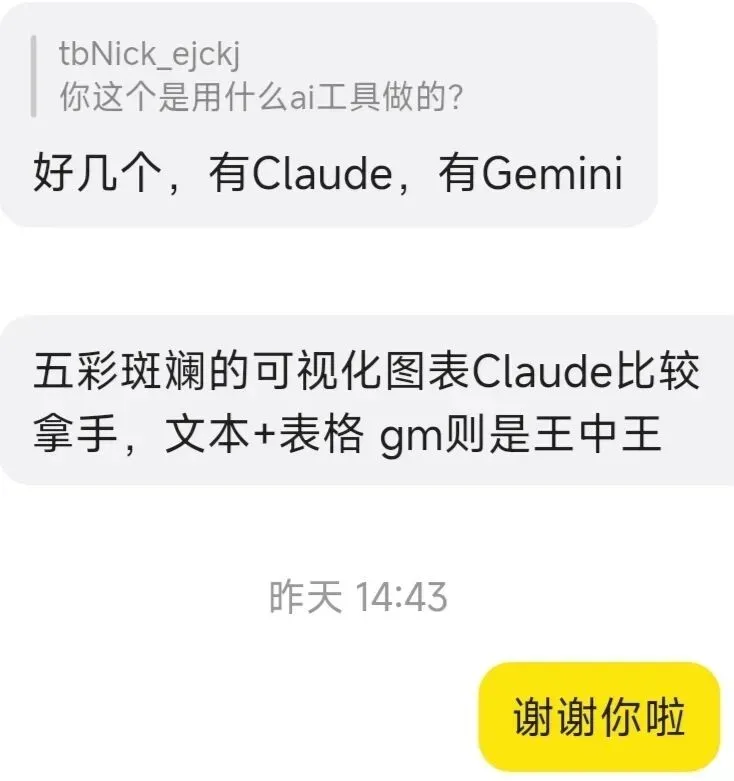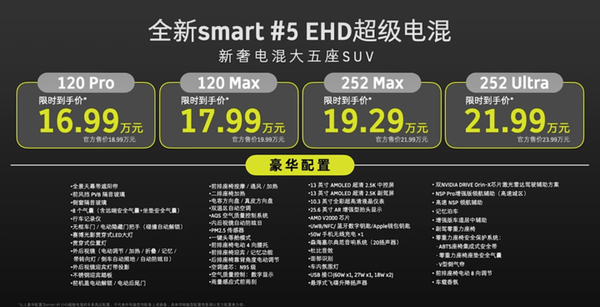The Most Outrageous AI Money-Making Method Has Emerged

Yangmei — October 29, 2025 — Guangdong
Surge of "AI Scalpers" on Second-Hand Platforms
Reselling AI-generated products becomes a profitable business model

---
Introduction
Many expected AI to represent technological equality. Yet on second-hand platforms, it has become a tool for exploiting information gaps.
This report examines:
- How “AI scalpers” profit through resale of generated products, account sharing, and service bundling.
- The hidden struggles of users caught in the digital divide.
- Why for some buyers, the purchase includes not just content, but a "ticket" into the intelligent world.
---
The Tip-Off
A reader recently alerted our editorial team to a wave of "AI scalpers" appearing across resale sites.
Key observations:
- Many AI-generated products are free to access via official platforms.
- Resale appears to target lower-tier demographics, often older adults who struggle with AI tools.
- Buyers include older users, early adopters seeking convenience, and even professionals valuing time savings.
- Popular goods include research reports from Gemini or Kimi — such reports are professionally formatted, with PPT visuals, priced at 9.9 RMB each.
---
How Sellers Operate
Models vary:
- Account sales — Reselling paid tool access.
- Single-use AI runs — e.g., OK Computer outputs.
- Bundled AI packages — Grouping several AI tools into one offer.
Objective: Monetize unused or exclusive computational privileges.
---
Case Study: “Lighthouse Jellyfish”
- Specializes in Gemini / Kimi deep-dive reports.
- Prices: 8–10 RMB per report.
- Format: Structured documents with PPT download links.
- Reality check: Similar results are obtainable in ~30 mins with free Kimi access.
Market scale: A quick search for "Kimi deep report" returns hundreds of listings.

Figure | Numerous accounts reselling AI products on the second-hand platform
---
Another Seller: “Raymon”
- Offers proxy AI services for ~10 tools (Claude, Manus, Gemini, etc.).
- Flagship: Research reports at 15.3 RMB — sells better than cheaper alternatives.
- Personal membership: 99 RMB/month Kimi Premium
- Includes 23 runs of “OK Computer” + 21 deep dives.
- “Scalper” pricing would value this at >500 RMB resale.
---
Beyond Convenience: What Buyers Value
Some prefer paying scalpers for:
- Ready-to-use outputs
- Avoiding learning curves
- Circumventing account registration hurdles
---
Two Dominant Scalper Product Categories
1. Service-Based "Cloud Labor"
- Buyer sends instructions → Seller processes request using advanced AI tools.
- Price example: Kimi Long Document Analysis — 9.9 RMB/run
- Resale model: Break a premium membership into microservices and sell per request.
---
2. Integrated "All-in-One Toolkits"
- Bundle multiple tools: ChatGPT, Claude, Grammarly, etc.
- Aim: Attract buyers wanting all functionalities in one package.

Image | Clever sellers bundling AI tools into an ‘All-in-One’ package
---
Scalper Revenue Models
Model 1 — Sub-Landlording
- Share or split one premium account among multiple buyers.
- Risk: Account bans, unstable services.
- Analogy: Cyber hostel — many tenants using one rented space.
Model 2 — Service Provision
- Sell final outputs instead of raw access.
- Example: “Kimi Deep Analysis” — cost 49/month; sell 10 runs at 9.9 RMB → net 50 RMB profit.
- Some sellers evolve into AI outsourcing studios for SMEs.
---
Black Market Tickets to the AI World
Buyer Types:
- Light users — Occasional needs, minimal payment habit.
- Group buyers — Split subscription costs among friends.
Example: User “Lotus Root” proposes a five-person Kimi subscription group buy:
- Monthly cost: 49 RMB → Annual per person: 147 RMB.
- Suits young “AI natives” balancing tech savvy + cost consciousness.
---
Industry Implications:
- Large-model companies struggle to cultivate paying consumers.
- AI outputs become tradable for one reason:
- Systematic task processing — AI shifts from simple conversation to performing real work.
---
Professional Use Case: “Linlin” in Advertising Design
- Buys Kimi services from scalpers at 9.9 RMB/report.
- Uses AI for end-to-end project workflows:
- Target positioning
- Script framework
- Visual description
- Shot length planning
- Voice-matching
- Dynamic rendering
---
Emotional Use Case: “Zhang Lu” reanimates old photos
- Age: 63, lower-tier market.
- Pays 88 RMB for 30-sec AI-restored video.
- AI repairs frames, generates expressions, syncs mouth movements.
- Result: Personal emotional value transcends technology.
---
Analysis: A Parasitic Cognitive Gap Economy
What’s truly sold?
- Not just AI output — but knowledge & access gaps.
- First adopters of AI usage thresholds become rule-makers in this new ecosystem.
---
Open Innovation Pathways
Platforms like AiToEarn官网 aim to:
- Let creators efficiently generate + publish + monetize AI content.
- Publish across Douyin, Bilibili, Xiaohongshu, Instagram, YouTube, and more.
- Integrate analytics + model rankings (AI模型排名).
These ecosystems reduce technical barriers and promote transparent monetization, helping bypass opaque middlemen.
---
———— / E N D / ————
📢 Join the Product Manager Evolution Camp
Stay ahead on industry trends, business insights, and more.

---
📚 Recommended Reading


---
Further Insights
As AI tools grow more advanced, bridging tech and ordinary users will be crucial.
Open-source solutions like AiToEarn官网 offer a route:
- Automate generation → publishing → monetization.
- Multi-platform support: Douyin, Kwai, WeChat, Bilibili, Xiaohongshu, Facebook, Instagram, LinkedIn, Threads, YouTube, Pinterest, X.
- Integrated analytics & model ranking tools.

Read the Original Article
---
Do you want me to also design a condensed, visually friendly summary of this article for social media sharing? That could make it easier to engage non-technical readers while keeping the depth of the insights.



